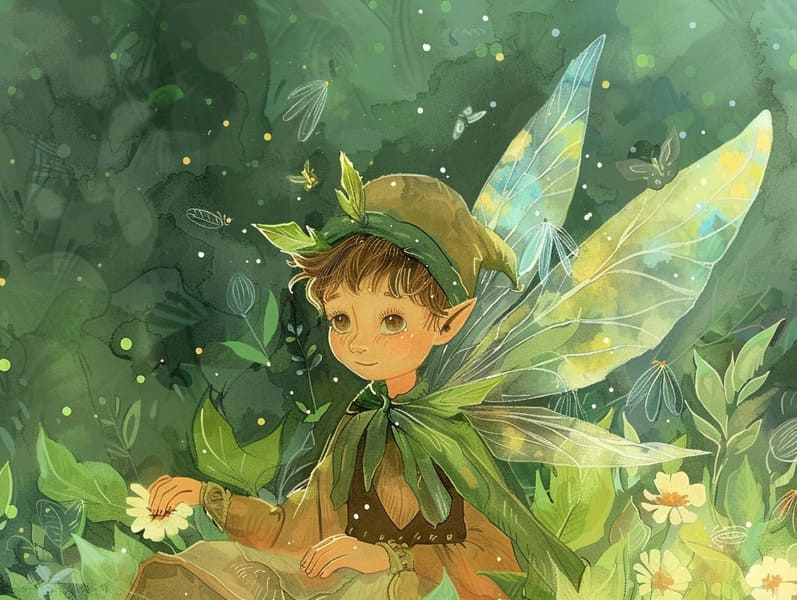
Best fairy tales have old origins. These stories have been relayed from one generation to the next long before they were ever inscribed. They emerged from a variety of civilizations, including Western traditions. They were initially transmitted among mature audiences, often carrying themes and messages relevant to the societal norms and beliefs of the time.
The renowned Brothers Grimm, Jacob and Wilhelm (the Grimm brothers), were among the first to compile and publish many of these beloved narratives. Their anthology, "Grimm's Fairy Stories," included tales like "The True Bride," "The Bread Crumb Trail," and "Snow-White and Rose-Red," which have since become mainstays in the world of classic fairy tales. Similarly, H. C. Andersen's whimsical tales, such as "The Story of the Little Mermaid," and "The Ugly Duckling," have floated into hearts worldwide, ensuring their place in the pantheon of treasured fairy tales.
Despite their age, fairy tales remain as impactful as ever, especially as nighttime stories for kids. These delightful tales are now available in numerous formats, including beautifully illustrated books, captivating animations, and online fairy tales.
Their unwavering allure can be connected to several delightful features:
Significant Morals: Old fairy tales often whisper important moral lessons. Narratives like "The Tale of the Boy Who Cried Wolf" teach the significance of truthfulness, while "The Story of the Tortoise and the Hare" highlight the values of determination and unpretentiousness. These stories offer the young clear distinctions between correct and incorrect, helping to shape their moral compass in a subtle yet lasting way.
Compassion and Knowledge: Timeless fairy tales frequently showcase individuals facing difficulties and adversities, fostering kids to identify with their struggles and applaud their triumphs. For instance, "The Tale of Beauty and the Beast" teaches us the merit of looking deeper to know the inner being of a person, enhancing warmth and discernment.
Cultural Understanding: Many classic fairy tales are imbued with the cultural contexts from which they sprang. Understanding these fairy tales can provide enlightening views into different heritages, building a sense of global respect and understanding.
Creativity and Imagination: The fantastical elements in fairy tales—talking animals—generate children’s creative minds. These fairy tales take readers to imaginary realms, inspiring creative dreams and a sense of astonishment that remains a lifetime.
Traditional fairy tales are not only spellbinding but also illuminating. They function as captivating tools in developing various thinking and feeling skills in children. When fairy tales are spoken, they advance language development by offering new linguistic elements and complicated sentence structures. This practice also strengthens listening abilities and attentiveness, as children concentrate deeply, keen to see what happens next.
Furthermore, contemplating the themes and characters of classic fairy tales can promote cognitive skills and intellectual skills. Young ones learn to discover patterns, guess what will happen, and get cause and effect. These talks also benefit little ones convey their thoughts and feelings, strengthening their emotional intelligence.
In today’s cyber age, the accessibility of digital storybooks has made these tales more reachable than ever. Web-based platforms and online apps extend extensive collections of ancient fairy tales that can be experienced or listened through anytime, anywhere. Fairy tales read aloud are particularly popular, extending an interactive way for little ones to immerse in these spellbinding stories. Narrated books and narrated videos guide characters and settings to life, often paired with spellbinding harmonies and background music that raise the narrative experience.
The unfading fascination of ancient fairy tales lies in their ability to change to the present while staying true to their core values. Contemporary renditions of these fairy tales often present more multicultural protagonists and modern settings, making them pertinent to today’s audience. However, the central morals of valor, kindheartedness, and rightness remain unchanged, continuing to appeal to young readers of all ages.
Fairy tales also offer a sense of warmth and familiarity. They deliver up a organized narrative with a apparent beginning, middle, and end, often coming to a close with the culmination of conflicts and the triumph of virtue over vice. This constancy can be encouraging for the young, introducing a sense of firmness in an shifting world.
Timeless fairy tales continue to mesmerize and guide new generations, maintaining their spell and applicability in modern society. As kids' bedtime tales, they feature a perfect blend of fascination and comprehension, backing moral values, empathy, and creativity. The accessibility of online storybooks and the sought after status of fairy tales spoken certify that these timeless stories remain acquirable to new generations.
By perpetuating and relating these tales, we continue to praise the rich tapestry of human imagination and cultural heritage. Whether you are browsing a gorgeously illustrated book, accessing a internet library, or hearing an sound book, the charm of timeless fairy tales is always within reach. These tales illustrate of the enduring strength of storytelling and its ability to unite us across eras and regions.
If you are discovering a gorgeously illustrated book, experiencing a online library, or listening on an audiobook, the loveliness of Grimm's fairy tales is always within reach.
These fairy tales highlight of the persistent influence of storytelling and its ability to unite us across popular fairy tales with morals epochs and places, creating a bond that captivates and teaches alike.
Comments on “The Evolution of Legendary Fairy Tales with Its Eternal Attraction.”